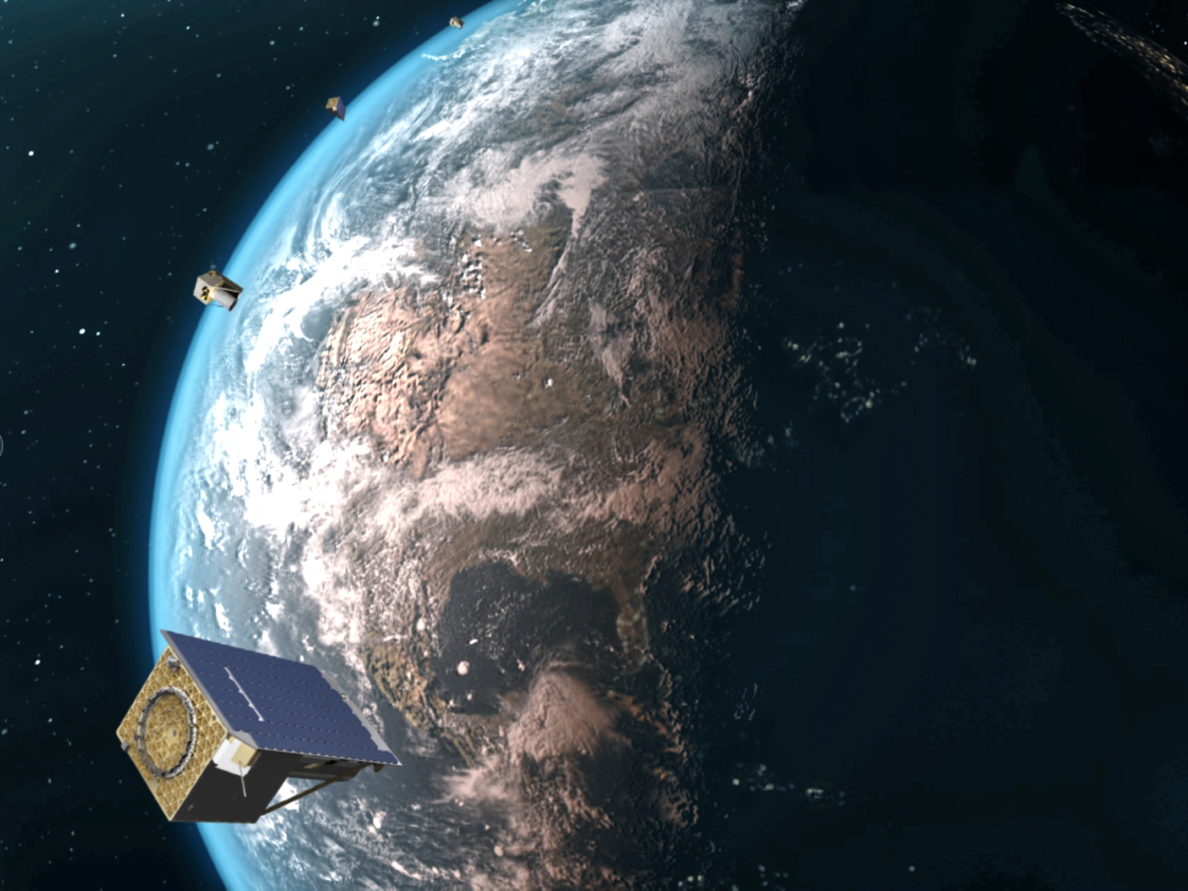Imagine a moment in the not-too-distant future when another health emergency develops. It pops up in a remote village and within a matter of days, it threatens to jump rivers, borders, and then continents, spreading across the globe.
In those early days, it’s essential that we’re able to find out what’s happening on the ground in that remote village. We want to map local occurrences, regional health clinics and the movement of people and goods. We need all of that information, and we need it fast. And then we need to share that information as quickly and efficiently as possible.
So, how do you rapidly communicate such vital information to the global health experts who so desperately need it?
At BlackSky Global, it’s not hard to imagine a world where this kind of live-saving communication can drastically reduce the impacts of emerging viruses and other health crises.

Advances such as persistent geospatial awareness, high-speed broadband satellite constellations and point-to-point personal space transportation are changing what we think is possible.
Thanks to innovations by the space industry, a new world, one that’s healthier and more efficient, is coming.
For the first time in history, space isn’t the exclusive domain of major world powers. Across industries, space has been commercialized. The result is an innovation curve that has the power to greatly impact our human experience.
Shrinking both time and distance can create a safer and healthier world. Through global high-revisit, persistent monitoring provided by smallsat constellations — or global persistent intelligence — we can map and analyze data in a matter of minutes. Companies such as BlackSky and Hawkeye 360 and are making this game-changing work possible.
Next is where global, high-speed communication networks, like those provided by Intelsat, come in to play. In cases of emerging pandemics and other health crises, local doctors can video chat with clinics in other affected areas, sharing crucial, life-saving information and expertise. First responders can connect and coordinate with the Red Cross, the Centers for Disease Control or other NGOs.
Imagine that a team of scientists on one continent has determined the genetic markers that will help others respond to the emerging health crisis. The team sends that vital information via global broadband constellation to the CDC. Work immediately begins on a life-saving antivirus. Hours, even minutes, save lives. The clock is ticking.
However, we still need that antivirus in the remote village where the outbreak began. Rocket-powered, interorbital space planes — such as those developed by Virgin Galactic — could potentially deliver doctors and nurses around the planet in 90 minutes. In less time than it takes to watch the latest blockbuster superhero movie, an antivirus is deployed in real life. This is not the stuff of science fiction. These types of systems are being built right now.
This scenario, of course, requires more than technology. It requires incredible people all over the globe working together, plus strong leadership willing to cooperate for a greater good. Technology, however, will be an essential part of the equation.
As the COVID-19 crisis unfolds around the globe, the enormous potential that space innovations offer the field of epidemiology is clear. The impact doesn’t stop there. We’ll be leaning on space to create safer and healthier cities and countries in many other ways. Consider that 90 percent of today’s world population lives in urban settings. It’s an astounding number. How, then, do we make our cities healthier and more efficient?
One answer to this question is smart cities. These interconnected urban areas will likely be essential to creating safer and healthier environments for all of us. Tools such as persistent geospatial awareness and high-speed, broadband satellite communications will power the smart cities of the future. For instance, insights from satellite imagery can help civil engineers mitigate heat dispersion, design safer intersections, and even increase equal access to affordable and good-quality fresh food by eliminating food deserts.
As we become even more urbanized, we’ll need to pay greater attention to the movement of information and materials through our population centers. Persistent geospatial awareness and high-speed, broadband satellite communications already play an enormous role with logistics supply chains particularly in smart cities. If our urban centers continue to grow, our transportation infrastructure must grow with them. The next step in a safer and healthier world will include the use of autonomous vehicles to connect logistics and supply chains around the planet.
Interestingly, autonomous vehicles fundamentally require the kind of “space backbone” we’ve been discussing. They need global, high-speed broadband internet to connect everything all data and communications.
They also require the global persistent intelligence layer so that we can understand what is happening around the planet. These are all essential components that make it possible to rapidly move people or materials.
BlackSky has pioneered persistent global geospatial awareness. At the same time, high-speed, broadband satellite communications provided by companies like Intelsat are changing the world of digital communications. Add to those the point-to-point, through-space personal transport concepts by Virgin Galactic, and you begin to see the future.
In a fundamental sense, much of the work happening in space right now is about closing the journey of time and distance. It’s about making the globe an even smaller place. This work is going to be one of the main drivers of our economic growth for the next decade. When we shrink the globe, we enable the world’s brightest minds to come together to make the world a better place.
These kinds of innovations can improve our lives in profound and dramatic ways — in fact, they already are accomplishing these challenges.
blacksky.com
www.he360.com
www.intelsat.com
www.virgingalactic.com
Dr. Peter Wegner is the Chief Strategy Officer of BlackSky Global. He has been a pioneering innovator in the smallsat industry, having served as Director of Advanced Concepts at Utah State University’s Space Dynamics Laboratory, Director of the DoD’s Operationally Responsive Space Office at Kirtland AFB, New Mexico, Technical Advisor to Air Force Space Command Directorate of Requirements and a Research Engineer with the Air Force Research Laboratory Space Vehicles Directorate.

He is known for the development of the ESPA ring, for leading the DoD’s Tactical Satellite Missions (TacSat-1, -2, -3, -4, -5), for establishing the DoD’s ORS Office and building and launching six ORS missions within the first six years of the program’s life and for his relentless pursuit to democratize the power of space for disadvantaged people.


